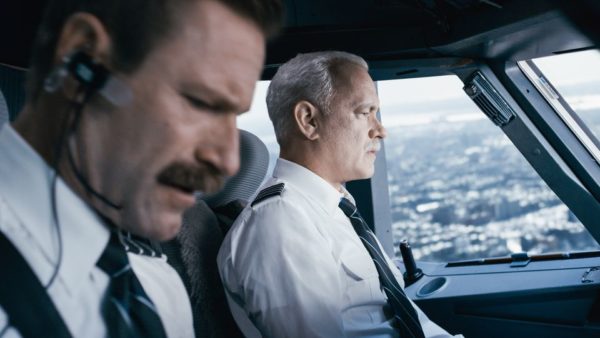Sully Review

RATING: 



(3.5 STARS)
In 208 seconds, I could make a sandwich, though it might not be my best effort and there’s a decent chance I spend most of that time agonizing over spicy or dijon mustard.
In January 2009, Captain Chesley “Sully” Sullenburger and First Officer Jeff Skiles had 208 seconds to decide the best course of action for a suddenly unresponsive aircraft and the 155 souls aboard it. You probably know that Sully and Skiles landed the plane on the Hudson River — an objectively correct decision considering everyone survived. But that doesn’t mean everyone sees it that way, and so we have Clint Eastwood’s Sully.
The film has been marketed as a Flight-esque examination of Sully’s professional and personal judgment, and I too set it up that way. Indeed, the National Transportation Safety Board’s series of hearings takes up much of Sully‘s run time, but its most compelling material by far is its depiction of the crash and Sully’s own PTSD.
It’s a flawed film, I’m sure, but in the moment, the emotion overtook me (and from what I could tell, many others in the theater with me). It might not be the best movie I’ve seen this year, but it’s one of the most satisfying, and it’s the best thing Eastwood has done since Million Dollar Baby.
Eastwood opens the film with a surprise. Sully is flying US Airways Flight 1549 back to LaGuardia following a series of bird strikes that took out both engines. He’s circling back over the city, and lower and lower it goes before clipping a skyscraper and exploding into another. Sully wakes, as startled and shaken as we are.
This sequence is a tough reminder of the reality of his and his passengers’ potential peril. Reading headlines about a routine job turned heroic, miraculous deed is one thing; Seeing it play out against what could have been is something else entirely. Sully works in spite of some material but because of this scene for one.
Sully is at its best, however, when we’re in the plane for those 208 seconds. We get the scene midway through the film, after everything with the NTSB is set up and we sit in on multiple phone calls between Sully and his wife, Lorraine (Laura Linney). Eastwood lets it slowly unravel, introducing us to a few men and women boarding the soon-to-be-infamous plane. Once we’re in the air, it’s quick but controlled chaos — some birds, a few calls to local air traffic controllers, the decision to down the plan in the Hudson, the slow flooding of the cabin, evacuation to the wings, and the eventual rescue of all 155 souls.
The characterization of the passengers works in the context of the film. Ordinarily, we wouldn’t need to know that three of them almost missed the flight to Charlotte for their golf trip, or that an elderly woman was going to meet her new grandson. But Sully never removes himself from the job, and as such, these are just “souls.” He says it over and over, and this attitude underscores his humble view of his own actions. For much of the film, he’s proud of what he and Skiles did because it was their job, not because it was extraordinary.
This is also why he resents the NTSB hearings so much. Sully (the film) is at its weakest as Mike O’Malley, Jamey Sheridan, and Anna Gunn question Sully (the person) and Skiles to within an inch of their respective breaking points (not easy). It’s all a little ham-fisted but does build to a satisfying climax that sees Sully embrace his decision and his status as a hero. Hanks depicts all of this with grace, as does Eastwood — in fact, more grace than he’s demonstrated from the director’s chair in ages. In the context of his career, it’s a familiar film, but it’s tight and restrained. His passion is evident, but he doesn’t let that seep into his choices as a filmmaker, which makes this a top-notch effort.














One Response to Sully Review